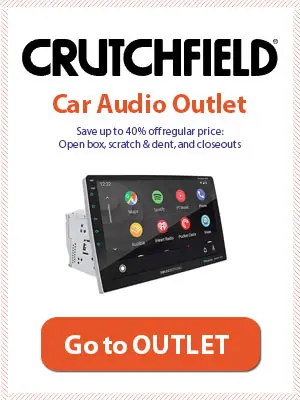Car Audio High-Pass and Low-Pass Frequency Filters settings
70 to 80Hz is a general rule for a car stereo sub-low pass filter (LPF) setting. After you’ve set it, slowly fine-tune and listen to find the best sound. For high-pass frequency filters (HPF), manufacturers frequently include specifications indicating the best cutoff frequency to use. Often, it is explicitly stated as the preferred cutoff, while on other occasions, you’ll have to rely on frequency response info from a speaker.
Table of Contents
- Car Audio High-Pass and Low-Pass Frequency Filters settings
- Step-by-Step Instructions for Setting High-Pass Frequency Filters (HPF)
- Step-by-Step Instructions for Setting Low-Pass Frequency Filters (LPF)
Step-by-Step Instructions for Setting High-Pass Frequency Filters (HPF)
Here are the steps you need to follow to set high-pass frequency filters.
Step 1: Refer to the Speaker Manufacturer’s Recommendations
Manufacturers frequently include specifications indicating the best cutoff frequency to use. Often, it is explicitly stated as the preferred cutoff, while on other occasions, you’ll have to rely on frequency response info from a speaker.
If neither is provided, the tables below can be used. The good news is that there is generally some information available to tell you the frequency response range of a speaker, which you can use to set the high-pass filter.
Step 2: Refer To Car Audio High Pass Crossover Frequency Table
During bass-heavy music and particularly under high power, car audio systems are prone to poor sound, warping, and “bottoming out.” However, this can be avoided somewhat by using the recommendations in the car audio high pass crossover frequency table.
| Speaker type/system | Crossover frequency |
| Front or rear full-range coaxial or component speakers | 56, 60, to 80 Hz high pass |
| Subwoofer subsonic filter | 20-30Hz high pass. |
| Tweeters | 3-3.5kHz high pass |
| 3-way speaker systems | 3.5kHz (mid/treble) & 500Hz (mid/woofer) |
| 2-way speaker systems | 3kHz to 3.5KHz to tweeters |
| Midrange or woofer speakers | 250-500Hz high pass |
Step 3: Set the Crossover Slope for High-Pass Filter
The slope is the degree to which a crossover’s filtering capacity is steep. In other words, it measures how effective it is at preventing sound from passing through the crossover’s cutoff point.
Slopes are measured in decibels (dB) per octave, which is written as “dB/octave.”
In general, a -12dB slope is often the best option and works well with most sound systems. To block bass from reaching tweeters or small speakers, I suggest at least a 12dB slope, or preferably an 18dB slope if you have the option.
HPF FAQs
What is a High-Pass Frequency Filter and what does it do?
A High-Pass Frequency Filter is an electronic filter that allows high-frequency signals to pass through, but blocks or reduces low-frequency signals. In car audio system, it is used to filter out low-frequency noise and improve the overall sound quality of the system by allowing high-frequency sounds to come through more clearly.
Can you run multiple High-Pass Filters in a car audio system?
Yes, it is possible to run multiple High-Pass Filters. In addition, too many filters can result in a loss of sound quality overall, so be careful when you do this.
.
Step-by-Step Instructions for Setting Low-Pass Frequency Filters (LPF)
Here are the steps you need to follow to set low-pass frequency filters.
Step 1: Start by Setting Low-Pass Filter to 70 to 80Hz
70 to 80Hz is a general rule for a car stereo sub-low pass filter (LPF) setting. After you’ve set it, slowly fine-tune and listen to find the best sound.
Ideally, you should only hear pure, smooth bass from the subwoofer and no gaps in the audio signal when listening to music or watching a movie. If the level appears to be too low, you may need to enhance the gain on a powered subwoofer.
Step 2: Refer To Car Audio Low Pass Crossover Frequency Table
You can refer to the table below when looking to set low-pass frequency filters for different woofer types.
| Woofer type | Cutoff frequency |
| Powered or amp-driven subwoofers | 70 to 80Hz |
| Woofers/midbass in a 2-way speaker | Depending on the design and speakers, the frequency range can range from 1.5 to 3.5 kHz. |
| Midbass woofers in a 3-way system | 250Hz |
Step 3: Set the Crossover Slope for Low-Pass Filter
In general, a -12dB crossover slope is often the best option and works well with most sound systems. A sub with a slope of 12dB or 18dB generally sounds great.
LPF FAQs
What is a low-pass frequency filter and how does it work in car stereo systems?
A low-pass frequency filter is an electronic filter that allows frequencies below a specified cutoff frequency to pass through and blocks frequencies above that cutoff frequency.
By filtering out high-frequency sounds, car stereo systems only send low-frequency sounds to the subwoofer through low-pass frequency filters. Consequently, the subwoofer reproduces only low-frequency sounds, such as bass, improving the overall sound quality.
Can you explain the different types of low-pass frequency filters available for car stereo systems?
There are two main types of low-pass frequency filters for car stereo systems: passive and active.
A passive low-pass filter uses only passive components, such as resistors and capacitors, to filter the sound.
Unlike passive low-pass filters, active low-pass filters use active components to filter the sound, such as operational amplifiers.
In addition, active low-pass filters come in various orders, such as first-order, second-order, and third-order, with varying cutoff frequencies and roll-off slopes.
